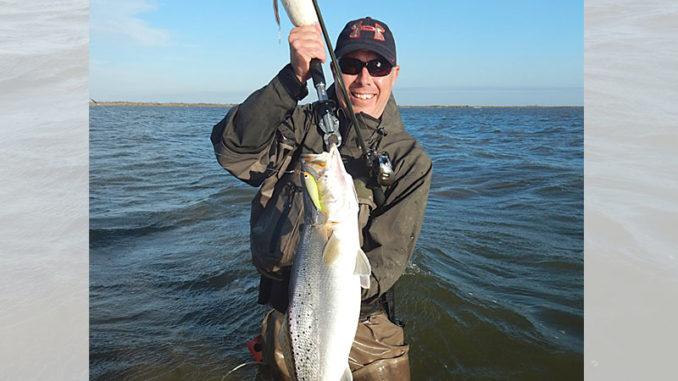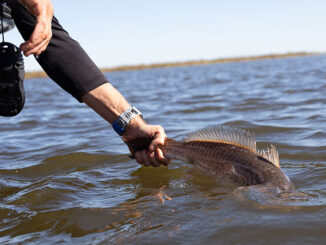
Fishing outlook appears positive as Sabine Lake conditions continue to improve
I am having difficulty remembering the last time I was filled with such anticipation and excitement to fish Sabine Lake during trophy trout season.
From the unprecedented deluges of Harvey and Imelda and the unnamed storms in between, Sabine has been much more like an ex-girlfriend I want to forget instead of my beloved home water.
Rainfall amounts of 30 to 60 inches, coupled with the massive freshwater inflow from Toledo Bend and Sam Rayburn puts quite a damper on chasing saltwager species. My waders have seen more time in the marsh chasing ducks than fish of late, but after a recent trip with my father, I have renewed hope.
Making memories
I cherish the time I spend with my father, but especially the time we spend together on the water. We recently had a wade-fishing trip that took us back to the good ol’ days. We didn’t catch any trophy trout, but it didn’t matter. He and I went through an absolute ton of trout in the 14- to 19-inch class, resulting in an incredible sense of jubilation.
A majority of the fish we caught were trout, but there were a handful of over-slots redfish that crashed the party. Nearly all of the fish were landed on either a Rapala X-Rap or a MirrOdine, with a few falling victim to a Skitter Walk.
Conditions
Overall, the lake is in fantastic condition, both salty and clear, and that has me looking forward to the last half of winter. February brings a different pattern, verging on a transition period that will take place during spring.
By February, trout have had time to get used to cooler water temperatures. Fishing areas with deep-water access is not quite as important now, although it is still very effective and productive. The deeper waters to which trout retreat during cold snaps have cooled, resulting in sow trout frequenting the flats and areas that warm up more quickly with the longer duration of the sun’s rays.
Western shorelines warm most quickly; they are the first to catch the light of the rising sun. Shell bottoms and areas with dark mud bottoms also tend to have slightly warmer water; remember, a single degree warmer is significant.
Trout locations, tactics
February is a time when the water can become “too clear.” Coffee Ground Cove and Joe’s Cove come to mind, as the water in these locations can resemble tap water in February. A trout’s diet in late winter consists primarily of mullet or other finfish. I imagine that attempting to catch a live chicken would be a fair comparison to the challenge for a trout to catch a live mullet. This degree of difficulty results in trout utilizing areas of stained water and low-light conditions to assist with their feedings. I will actually target the dirtiest water on the flats during daylight hours and fish the clearest water during low-light periods and at night. If you pay attention to your depth finder, you will notice the stained water will be slightly warmer than clear water.
The best baits are naturally those that mimic a mullet or other finfish. If the water temperature is 60 degrees or higher, and/or there is mullet activity on the surface, I highly recommend canvassing the area with a topwater such as a Super Spook or One Knocker. If you are getting blowups but not hooking up, change colors. And if you are still missing fish, switch to a subsurface lure such as a MirrOdine or a Fat Boy.
The fish will dictate the cadence of your retrieve, and slower is not always better. Many times, a Fat Boy works best in a walk-the-dog fashion, just beneath the surface. Fish an area in which you have confidence, active bait present, decent water clarity, and vary your presentation until you start getting bit — then repeat. Above all else, cherish your time on the water and this blessing in which we are able to enjoy.
Capt. Adam Jaynes can be found at justfishsabine.com.


